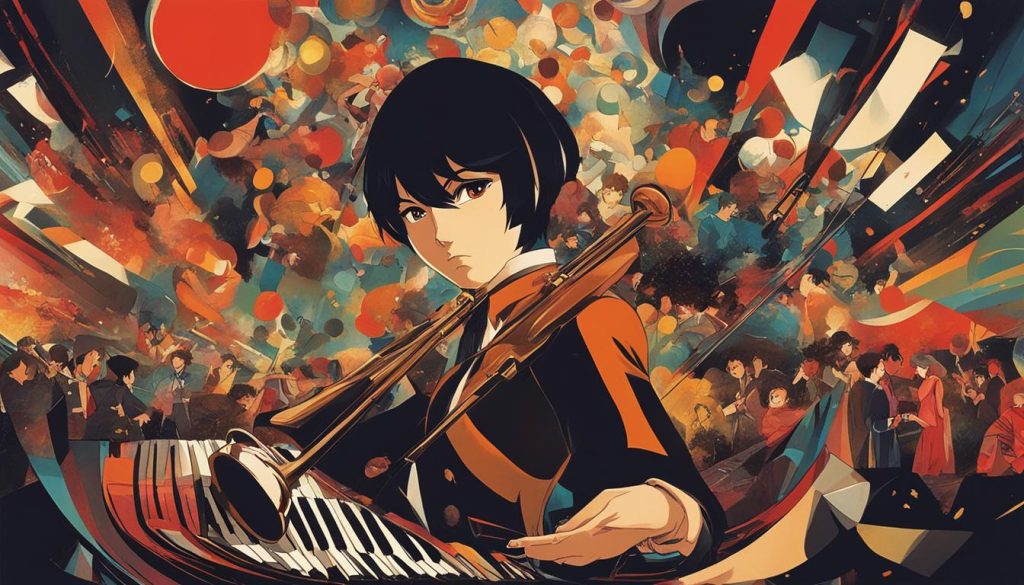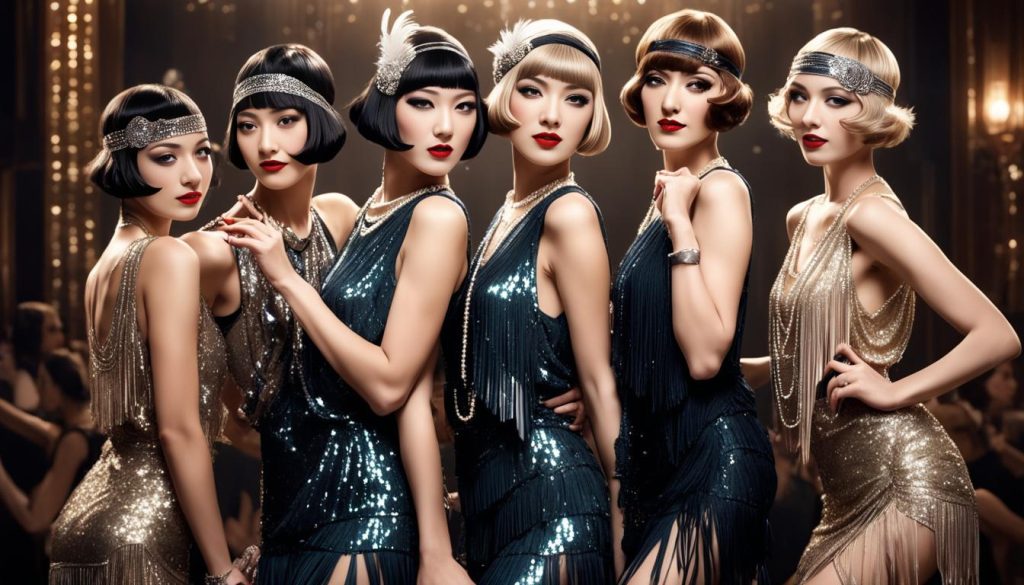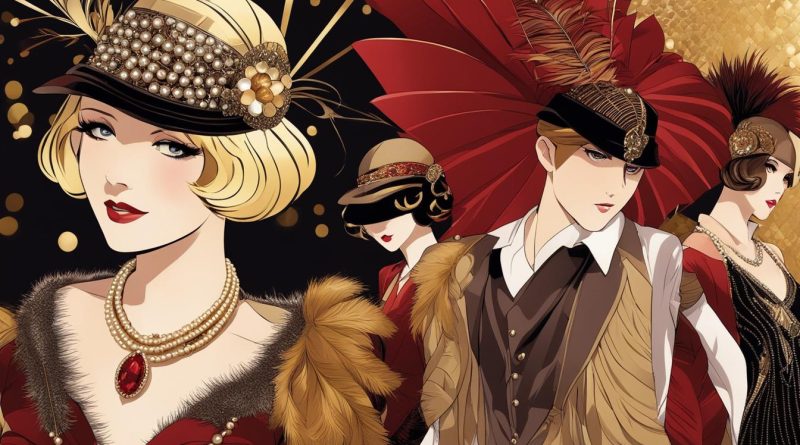Exploring the Vibrance of the Jazz Age Era
The Jazz Age, also known as the Roaring Twenties, was a vibrant era that marked a cultural dynamism and a significant shift in lifestyle across America and the world. The 1920s is known for its music revolution, the flapper fashion, and the emergence of new social norms, that redefined the American society. Jazz music, in particular, became the anthem of the Jazz Age, with renowned jazz musicians creating a new, unique, and popular sound that defined an era.
The Jazz Age era is a testament to the human spirit and resilience during times of peace and prosperity. It was a time of economic growth, hope, and freedom that enabled artists, musicians, and creatives to express themselves freely, producing an array of groundbreaking cultural entertainment and artwork.
Key Takeaways
- The Jazz Age era was marked by cultural dynamism and a significant shift in lifestyle.
- Jazz music, in particular, became the anthem of the era, with renowned jazz musicians creating a popular and unique sound.
- The Jazz Age era was a time of economic growth, hope and freedom, enabling artists, musicians, and creatives to express themselves freely.
- The Jazz Age era was a testament to the human spirit and resilience during times of peace and prosperity.
- The Jazz Age era redefined social norms and produced a plethora of groundbreaking cultural entertainment and artwork.
The Rise of Jazz: Transforming the Music Landscape
Jazz emerged as a transformative art form during the vibrant Jazz Age era. The jazz music revolution signaled a shift in music and culture that would leave a lasting impact on society. Jazz’s popularity grew rapidly during this time, captivating audiences with its unique rhythms and beats.
Several popular jazz musicians emerged during this period, including Louis Armstrong, Duke Ellington, and Bessie Smith, among others. Their innovative styles and techniques helped shape the sound of jazz music during the time, and their influence is still felt in contemporary jazz music today.

The cultural impact of jazz music during the Jazz Age cannot be overstated. Jazz became a symbol of the era’s dynamism and represented a break from traditional values. The music’s infectious rhythms and “cool” vibe resonated with audiences, leading to the growth of jazz clubs and dance halls across the country. Jazz music also provided a space for artists to express themselves freely, breaking down racial and social barriers.
“Without music, life would be a mistake”
– Friedrich Nietzsche
This is a subheading, suitable for a particular quote that you would like to highlight even further.
The rise of jazz music during the Jazz Age reflects a transformative moment in American cultural history. Its lasting impact can still be felt across society today, proving once again that music has the power to unites audiences and transform lives.
Flapper Flair: Fashion and Social Transformation
The Jazz Age was known for its cultural dynamism, marked by a revolution in music, art, and fashion. In particular, the flapper fashion of the 1920s is still iconic today for its daring style and societal significance. Flappers, young women who embraced a liberated lifestyle, challenged the traditional gender roles of the time through their fashion choices.
One of the most notable characteristics of flapper fashion was its departure from the restrictive clothing of previous eras. Women abandoned corsets and long hemlines in favor of shorter, looser dresses made from flowing fabrics like chiffon and silk. The iconic drop-waist silhouette of the flapper dress reflected a new sense of freedom and movement.
Accessories also played a significant role in flapper fashion. Hats became smaller and closer to the head, often adorned with feathers or other embellishments. Long beaded necklaces, gloves, and cigarette holders were also popular accessories that added to the flapper’s striking appearance.
The Significance of Flapper Fashion
Flapper fashion was more than just a new trend; it represented a significant shift in women’s empowerment and societal norms. By rejecting the traditional clothing of their mothers and grandmothers, flappers symbolized a rejection of societal expectations and limitations placed on women.
Through their fashion choices, flappers signaled their independence and desire for equality with men. The shorter dresses and bobbed hairstyles were daring and unconventional, reflecting a newfound sense of liberation and self-expression. Flappers became a symbol for a generation of women who were determined to challenge the status quo and forge their own path in life.

“Fashion is not something that exists in dresses only. Fashion is in the sky, in the street. Fashion has to do with ideas, the way we live, what is happening.” – Coco Chanel
Conclusion
The Jazz Age is remembered as a vibrant era with a tremendous cultural impact. The legacy of this era, particularly in music and fashion, continues to live on, inspiring contemporary artists and designers. While the Jazz Age only lasted for a brief period, its impact remains profound even today.
The music revolution of the Jazz Age brought about a new era of creativity, innovation, and artistic expression. Jazz music has evolved and expanded since the 1920s, but its influence on modern-day music genres is undeniable.
The fashion of the Jazz Age, particularly the flapper style, represented more than just a passing trend. It symbolized a time of social transformation, a period of increased women’s empowerment, and a challenge to traditional gender roles.
The Jazz Age was a time of rapid change, cultural dynamism, and artistic experimentation. It left an indelible mark on American society and the world at large. Indeed, it was a vibrant era that continues to inspire generations today and for years to come.
FAQ
What is the Jazz Age?
The Jazz Age refers to the vibrant era of the 1920s characterized by cultural dynamism, a music revolution, and flapper flair.
What were the key elements that defined the Jazz Age?
The Jazz Age was defined by the jazz music revolution, cultural dynamism, and the popular flapper fashion.
How did jazz music transform the music landscape during the Jazz Age?
Jazz music emerged and gained popularity, transforming the music landscape of the Jazz Age. Popular jazz musicians shaped the era, and jazz had a significant cultural impact on society.
What is the significance of flapper fashion in the context of social transformation?
Flapper fashion was an iconic element of the Jazz Age, symbolizing social transformation and women’s empowerment. The unique style and attitudes of flappers challenged societal norms.
What is the lasting legacy of the Jazz Age?
The Jazz Age left a lasting legacy in terms of cultural impact. Its influence can still be seen and felt today, particularly in the realms of music and fashion.
